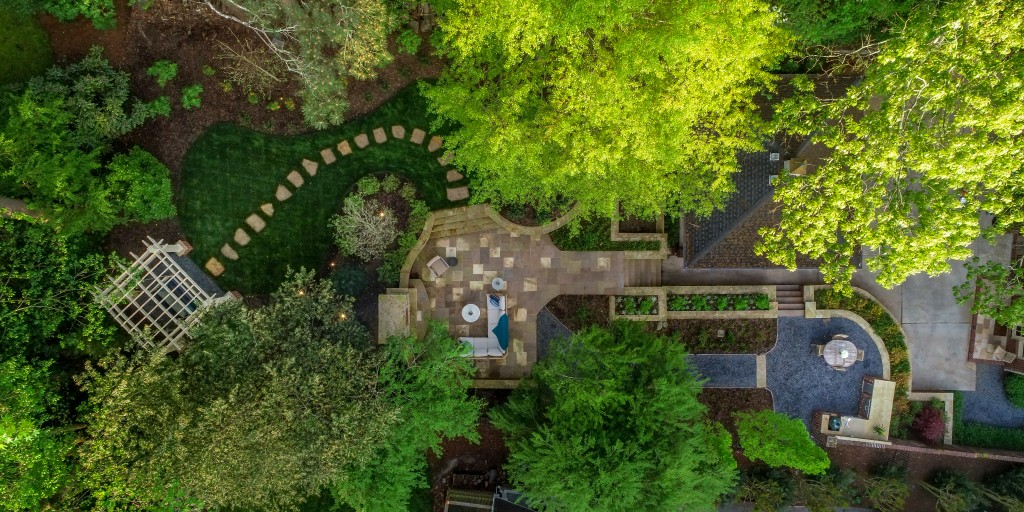The Best Guide To Landscape Design
Wiki Article
The Of Landscape Design
Table of ContentsLandscape Design Things To Know Before You BuyA Biased View of Landscape DesignSome Known Factual Statements About Landscape Design The Ultimate Guide To Landscape Design
When making a property landscape, the most important step is to place an intend on paper. Creating a plan of attack will save you time and money and is much more likely to result in an effective design. A plan of attack is created with the 'design procedure': a detailed method that thinks about the environmental problems, your wishes, and the elements and principles of style.The five steps of the design procedure include: 1) carrying out a website inventory and analysis, 2) identifying your requirements, 3) creating functional layouts, 4) creating conceptual design strategies, and 5) attracting a last design strategy. The very first 3 steps establish the visual, functional, and gardening requirements for the design. The last 2 steps after that apply those needs to the creation of the last landscape strategy.
This is a critical step for both plant choice and positioning and locating family activities and features. It is very important because the same environment conditions that influence the plantstemperature, humidity, rain, wind, and sunlightalso influence you, the individual. The next action is to make a listing of your demands and desiresthis assists you figure out how your yard and landscape will be utilized.
The practical diagram is then used to locate the task areas on the site and from this layout a conceptual plan is established. The last action is a last style that consists of all the hardscape and planting details that are necessary for installation. Throughout the design process there are ten important things to take into consideration: for plant selection and task place by considering what you want and need to help establish forms and organize spaces by marking activity areas and linking with elements for both the atmosphere and the user by utilizing massing and layering techniques such as shift areas and prime focus in the products, the colors, and the surface textures for the development and maintenance of plants by making use of sustainable style methods A comprehensive inventory and analysis of the website is very important to determine the ecological conditions for plant growth and the most effective use the website.
The Only Guide to Landscape Design
It is always best to utilize plants that will thrive in the existing soil. Where plants grow well, note the soil problems and utilize plants with comparable expanding needs.
Sun/shade patterns, the amount and length of exposure to sunlight or shade (Figure 1), develop microclimates (sometimes called microhabitats) - Landscape Design. Recording site conditions and existing plants on a base map will expose the area of microclimates in the yard. Plants typically come under one or two of four microclimate categories-full sunlight, partial color, shade, and deep color
What Does Landscape Design Do?
Figure 1. Sunlight and shade patterns. Credit Score: Gail Hansen, UF/IFAS It is necessary to keep in mind all the existing problems on a precise base map when doing the site supply (Figure 2). Utilities such as high-voltage line, sewage-disposal tanks, underground energies and roof covering overhangs establish plant location. Use a surveyor's plat of your residential or commercial property for the borders and area of your home.


Spending plan problems consist of the materials, first installment expenses and the on-going upkeep costs. Identify the time and cash you agree to take into keeping the plants and hardscape-be reasonable about your objectives and capability. Number 3. Present use areas. Credit Rating: Gail Hansen, UF/IFAS Number Continued 4. Proposed use areas. Credit Rating: Gail Hansen, UF/IFAS There are several various landscape design styles- from easy to complicated, however it is practical to choose one to guide your plant and material option.
Many individuals locate it helpful to look in gardening magazines and books for ideas. This is a great beginning, however be mindful that the gardens in the pictures were selected since they are exceptional examples. Consider the images with an important eye to collect concepts that you can adjust to your interest degree, your spending plan and your site.
Determine if you wish to open your yard, close your backyard, or a little of both, to these views (Landscape Design). To put it simply, do you desire the garden to enclose the area around you and connect primarily to your house, or do you want the garden to open views and look exterior, connecting to the environments? This will give you a beginning indicate assume concerning a theme
The 7-Minute Rule for Landscape Design
This is called "local color", which implies it fits with the surroundings. There are both kind motifs and design themes. Every yard should have a kind theme, but not all gardens have a design motif. Many property yards have no particular style other than to mix with the home by repeating information from the design such as materials, shade, and type.
In a kind style the company and form of the spaces in the he has a good point backyard is based either on the form of the home, the form of the locations in between your house and the home boundaries, or a favorite form of the home owner. The you can find out more type style determines the shape and organization (the design) of the rooms and the links between them.

Report this wiki page